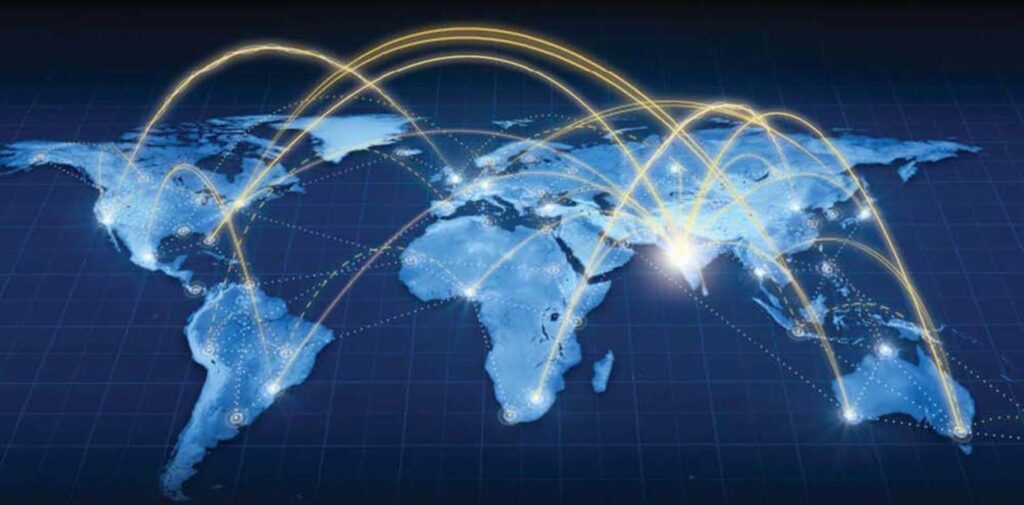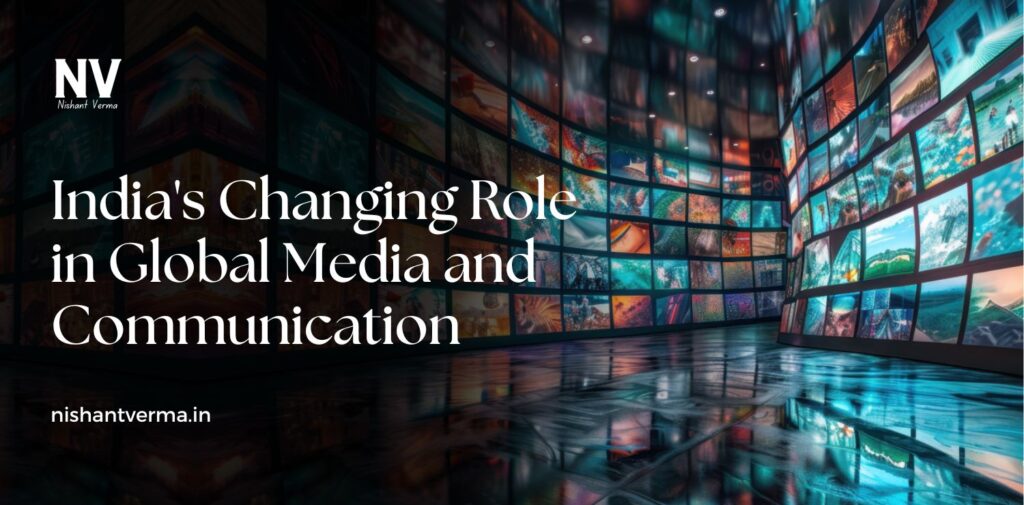In today’s world, media and communication are more powerful than ever before, shaping public opinion, influencing politics, and connecting people across the globe. India, with its vast population, diverse culture, and growing technological landscape, is playing an increasingly significant role in the global media and communication sector. Over the past few decades, India has transformed from a passive consumer of global media to an active producer and influencer of global content. This article explores India’s changing role in global media and communication, highlighting key factors contributing to this transformation and how the country is now at the center of global media innovation.
India’s Media Landscape: A Snapshot
India has one of the largest and most diverse media markets in the world. The country’s media landscape is a mix of television, print, digital media, and social media, which cater to a wide range of linguistic and cultural communities. India’s media industry is valued at over $22 billion and is expected to grow rapidly in the coming years.
The Indian television industry is one of the largest in the world, with hundreds of national and regional channels broadcasting content in various languages. The print media, which includes newspapers and magazines, also plays a significant role in shaping public discourse. However, the real transformation has come with the rise of digital media, which has become the dominant force in how people consume information and entertainment.
In recent years, the rise of over-the-top (OTT) platforms like Netflix, Amazon Prime, Hotstar, and Zee5 has revolutionized the way people watch television shows and movies. These platforms have created a new wave of entertainment that is not bound by traditional broadcasting schedules and have brought Indian content to a global audience. Similarly, social media platforms such as Facebook, Instagram, Twitter, and YouTube have allowed Indians to share their stories, connect with the world, and engage with international audiences like never before.

The Rise of Indian Cinema on the Global Stage
One of the most notable aspects of India’s changing role in global media is the growing influence of Indian cinema. Bollywood, the Hindi-language film industry, has long been known for its colorful and vibrant films, but in recent years, Indian cinema has expanded its reach globally, gaining recognition in international markets.
Films like “Lagaan”, “Dangal”, “Baahubali”, and “Zindagi Na Milegi Dobara” have not only performed well at the box office but have also received critical acclaim on international platforms. The success of films like “Slumdog Millionaire” (a British film featuring Indian actors and set in India) and “The Lunchbox” (which was widely appreciated at international film festivals) showcases the growing demand for Indian stories and talent.
Bollywood has also begun to collaborate more with international film industries, producing joint ventures and collaborating with global talent. This shift has helped Indian cinema gain more visibility and recognition at global film festivals like Cannes, Toronto, and Venice. In addition, the rise of OTT platforms has enabled Indian films to reach wider audiences, both in India and abroad. Many films that once struggled to reach international audiences are now available globally, allowing people from different parts of the world to enjoy them.
India’s Role in Digital Media and Innovation
India’s digital media landscape has undergone a dramatic shift in the last decade. The rise of smartphones, cheaper internet access, and the government’s push for Digital India have made the country one of the fastest-growing markets for digital media. India is now home to over 600 million internet users, making it one of the largest internet markets in the world. This has opened new opportunities for content creators, advertisers, and media companies to engage with a large and diverse audience.
Social media has played a critical role in shaping India’s role in global communication. Platforms like Twitter, Facebook, and Instagram have allowed Indian citizens to actively participate in global conversations, share opinions, and even influence political outcomes. Indian politicians, celebrities, and activists have harnessed the power of social media to reach millions, shaping narratives not only within India but also globally.
India’s growing influence in the start-up ecosystem has also led to innovations in digital media. Companies like InMobi (a mobile advertising company), ShareChat (a regional social media platform), and Zomato (a restaurant discovery platform) have expanded beyond India and established themselves as global players. This shift from a consumer of global technology to a producer of global technology marks a significant change in India’s role in the digital media space.

Indian Content Goes Global
One of the most striking aspects of India’s role in global media is the increasing demand for Indian content worldwide. Whether it is Bollywood films, regional language films, or web series, the global appetite for Indian content is growing rapidly. Platforms like Netflix, Amazon Prime, and YouTube have invested heavily in Indian content, producing original series and movies that appeal not only to Indian audiences but also to international viewers.
The global success of shows like “Sacred Games”, “Made in Heaven”, and “Mirzapur” has established India as a hub for high-quality, innovative television content. These shows, produced by Indian companies but distributed on international platforms, have brought Indian storytelling to the forefront of global entertainment. They reflect the diversity and complexity of Indian society and have resonated with viewers around the world, breaking stereotypes and showcasing India in a new light.
Indian music has also found a global audience. Bollywood music, with its catchy tunes and energetic dance numbers, has gained popularity across the world. Indian artists like A. R. Rahman, Ravi Shankar, and Lata Mangeshkar have long been recognized internationally, and contemporary artists are continuing this tradition. Global platforms like Spotify and Apple Music now feature Indian music, and Indian artists are collaborating with international stars, further strengthening India’s presence in global entertainment.
India’s Role in Global News and Journalism
Along with entertainment, India’s media is playing a growing role in the global news landscape. Indian media outlets like NDTV, Times Now, The Hindu, and India Today have expanded their digital presence and now offer news to a global audience. These outlets provide coverage of important global events from an Indian perspective, which is valuable for international audiences seeking alternative viewpoints on world affairs.
Indian journalists and media professionals are also gaining recognition for their work. Indian reporters covering global events such as the United Nations meetings, climate change summits, and international peace negotiations provide valuable insights into India’s policies and positions on global issues. The rise of independent journalism and online media platforms has further amplified India’s voice in the global media arena, allowing Indian reporters and analysts to engage with audiences worldwide.
Furthermore, Indian media has contributed to global awareness about important issues such as climate change, human rights, and economic development. Indian news outlets are increasingly reporting on global issues from an Indian perspective, helping to foster cross-cultural dialogue and understanding.

The Future of India’s Role in Global Media and Communication
As India continues to grow economically and technologically, its role in global media and communication is likely to expand even further. With the rise of 5G technology, the Internet of Things (IoT), and advances in artificial intelligence (AI), India’s ability to produce and distribute content will become more powerful. This will enable India to not only create more innovative content but also influence global trends in media consumption and communication.
Indian tech companies are already making strides in developing cutting-edge communication technologies, including virtual reality (VR), augmented reality (AR), and AI-powered content creation. These technologies will enable India to become a leader in the next wave of media innovation, impacting global entertainment, news, and communication in unprecedented ways.
Conclusion
India’s role in global media and communication has changed dramatically over the past few decades. From being primarily a consumer of global content, India has transformed into a major producer and influencer in the media landscape. With its booming digital media industry, growing influence in entertainment, and active participation in global conversations, India is poised to become an even more significant player in shaping global media in the future. As Indian content continues to reach new audiences worldwide, the country’s diverse stories and perspectives will help create a more inclusive and interconnected global media environment.




